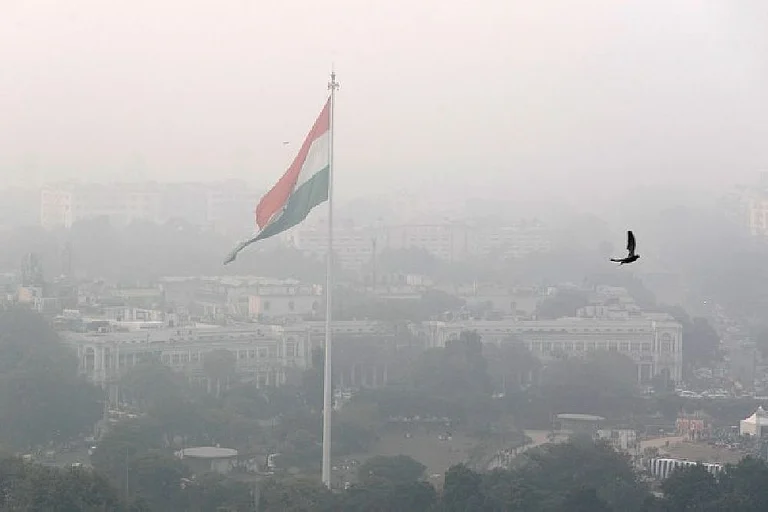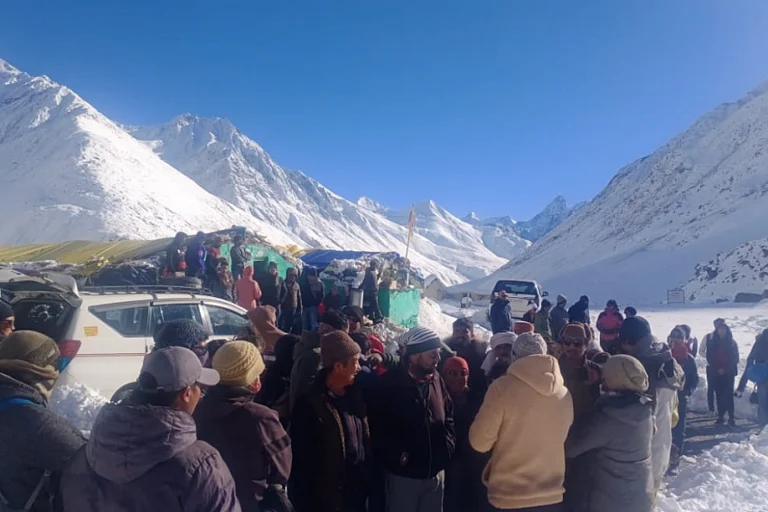You might expect a travelogue to stick to the places the author actually visits, but Divining the Deccan is Bill Aitken at large, rather than Bill on a bike from point A to point B. He has no compunction in discussing at length the places he avoids. Without a qualm, he abandons his plan to go to Ajanta, but still treats us to a detailed description. He bypasses Matheran on his bike, not in his book. Wherever he does go, he takes photographs which are reproduced in black and white. My favourite shows him on his bike crossing a river in a coracle, looking like a fledgling in its nest. But he devotes much less space to what he sees on his current trip than to recounting stories he has collected over the years and during his many previous tours of the Deccan.
His style is highly personalised, outspoken, sometimes acerbic, often amusing and in places misleading. A man who can breezily translate "Pardesi, pardesi, jaana nahin, mujhe chorke" as "Stranger, don't get lost", or Gulbarga as "garden of dargahs" does inspire doubt. He remarks: "Idols, it is assumed, came to India from Greece," ignoring the fact that this theory has long been debunked, and his caste and Hindu/ Muslim analysis is often simplistic.
His taste, though, is stunningly individual. He's unmoved by the Taj and finds the Hoysala temples of Somnathpur and Belur cloying anti-climaxes. Instead he gives prominence to less celebrated places. He prefers the architecture of Bijapur to that of Agra and considers the most culturally rewarding river in India the Malaprabha. It flows past Badami, Aihole and the monuments of Pattadakal which he finds the loveliest array of temple architecture in India.
The 'divine' in Divining the Deccan comes largely from his interest in comparative religion. He only states his personal quest towards the end of the book. He travels to seek clues to the divine as the full answer could overwhelm him. As he puts it, he prefers the taste of sugar to becoming one with the lump. Bhakti, and particularly saint Basavanna, fascinate him. The three most important sacred places he visits are in his view Shirdi, the Vitthala temple at Pandharpur and Sathya Sai Baba's ashram at Puttaparthi. Pride of place though goes to the latter. The book develops into a journey where manzil is the feet of the guru. For many years Bill has visited Sai Baba's ashram where he "jettisoned the safety net of the mind" and imbibed his teachings. He has seen his followers being transformed. He has witnessed miracles. Bill believes Sai Baba is for the rich, the rich in heart that is, who're "aware that the pearl of great price does not lie buried under peninsular rock but in the core of all of us".
Even sitting at the feet of the guru, however, Bill never loses his sense of humour. He wryly remarks on his discomfort sitting on the ashram floor after days on the uncomfortable seat of his bike. Perhaps he shouldn't have so long deserted his most natural vahan, the railway. In these days of sinking railway morale, perhaps one of the greatest lessons in devotion Bill has collected comes from Basha Sabi, the station master of the immaculately maintained station at Chikballapur. Sabi has been posted there since '70 and has hung a handwritten notice on the wall there which reads: "I am a station master/Safety is my motto/Passengers are my God/ Railway station is my temple/Hard work is my puja/Passengers' happiness is my souvenir."























